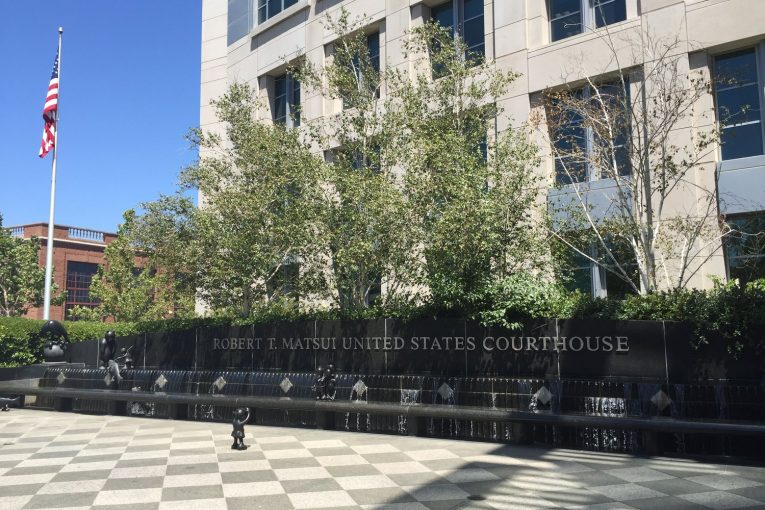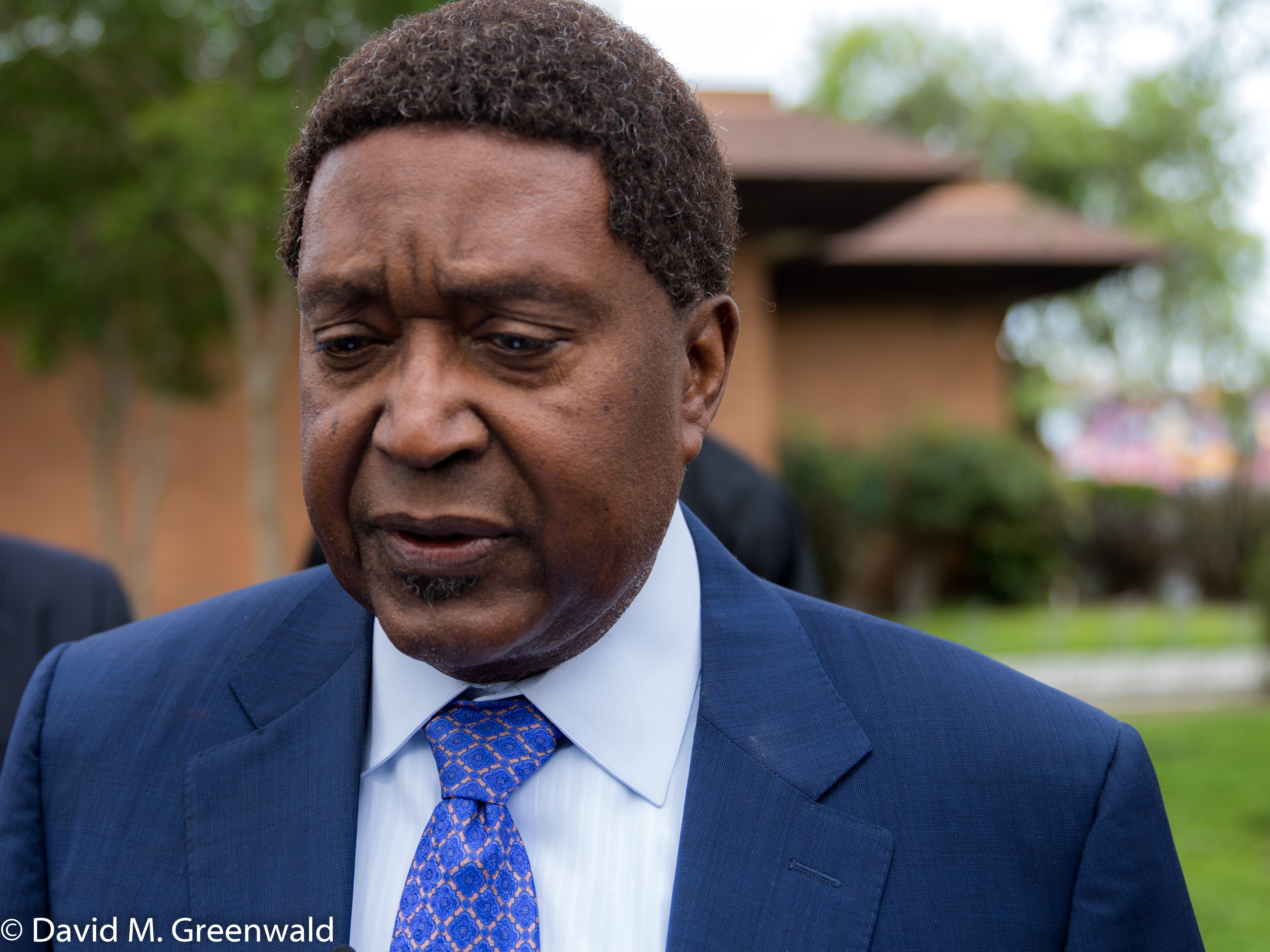

By Crescenzo Vellucci
Vanguard Capitol Bureau
SACRAMENTO – A day after one police procedures expert emphatically maintained Stockton police officers made a “tactical error” by shooting and killing alleged 16-year-old carjacker James Rivera Jr. nine years ago – his parents are suing the officers in federal court here – an expert for the police applauded the officers’ actions.
The trial, which started Monday, is expected to go to the eight-person federal jury late Friday. Closing arguments are set for mid-morning Friday in the U.S. Courthouse, Dept. 24.
Ronald K. Miller, a former police officer for several small cities in Southern California and SWAT expert, concluded that Stockton Police officer Eric Azarvand and former Stockton officer Greg Dunn were in a “complex, dangerous situation” and acted “reasonably” when they chased down and shot to death Rivera on July 22, 2010.
However, less than 24 hours before Miller’s statement, retired Los Angles Deputy Sheriff, and longtime police procedures expert Roger Alma Clark – a former lieutenant in the LA Sheriff Dept, former station commander and police instructor – was not at all complimentary of the officers’ procedures.
Both officers and the city of Stockton are the target of a civil rights lawsuit (Smith v. City of Stockton, et al) brought by the Dionne Smith-Downs and James Rivera Sr., parents of 16-year-old special needs student Rivera Jr., who was driving the carjacked blue van.
“Their lives were in danger and they made the decision the vehicle (a stolen van that police patrol cars broad-sided and pushed into a residential garage) was a lethal threat,” said Miller, adding that the van was a “substantial threat” to the officers and public. Miller is a paid consultant by the city of Stockton.
Miller also disagreed with Clark’s findings that the officers should have gone into a “tactical” retreat to review the situation because they had the time to do that when the suspect was stuck in  the van which was wedged into the garage area.
the van which was wedged into the garage area.
It was a “rapidly evolving” situation, insisted Miller, who said that the van was attempting, according to Dunn and Azarvand, to back out of the garage, which would have endangered the lives of officers and bystanders.
Miller admitted later under cross examination that he did not take into consideration the testimony of at least one other officer and several residents, who were within 30 feet or so of the shooting, and testified the van did not move and could not move because debris under it prevented movement.
Clark, the plaintiff’s expert, suggested that the “fear” felt by Dunn and Azarvand interfered with their rational thought.
“I can imagine a lot of things, including fear. But fear needs to be reasonable and objective,” Clark said, noting that officers should have used “reasonable alternatives before using force, especially lethal force.
In his testimony earlier this week, officer Dunn, specifically, said it was his “fear” of being run over by the van or being shot that led him to emptying his handgun into the van driven by Rivera Jr. just seconds after Rivera didn’t respond to commands.
“The shooting should not have occurred. There were alternatives,” insisted Clark, explaining that the “van was contained, the suspect was contained” and Rivera should have had a chance to “surrender.”
He said that officers are trained, until it’s “muscle memory,” to not break from safety into the danger zone – something that Dunn appeared to have done by getting out of his patrol car and standing right behind the van, which had been wedged into the garage after Dunn rammed it.
But Thursday, Miller charged that Dunn did the right thing to pin Rivera’s van in the space, and that it would not have been safe to redeploy as Clark suggested, and wait for Rivera to surrender.
“There was no time to bring in SWAT – (the van) was a threat to officers and the community,” said Miller, who also praised the 29 rounds fired into the van area (nine hit Rivera) to “stop the threat.”
But expert Clark, who spoke of an officer’s training to have a “reverence” for life, said Wednesday. “You just can’t shoot blindly. Officers are trained to get into position so they can see (the threat),” suggesting that the reason Rivera didn’t immediately respond was that he could have been injured from the crash and incapacitated.
There didn’t have to be injuries because “time” was on the side of law enforcement, Clark said, because the suspect was contained and couldn’t go anywhere, didn’t have a weapon.
Miller believed and stated Thursday that officers made all the right decisions, and that they gave Rivera time to surrender – although only a second or two transpired between commands to surrender and the firing of shots.
“It’s all about officer safety and survival,” said Miller.
John Burris, plaintiffs’ lead attorney, said he found it interesting that Miller didn’t talk to the officers, or “independent” witnesses, who disputed what the accused officers said about the van backing out and endangering them.
“ They (independent witnesses) did not see the van backing into the police car,” said Burris. In fact, Azarvand and Dunn are the only officers who swore the van moved – and they had a reason to say that because that is their primary defense to the charge of excessive force.
“There was no basis for them to shoot,” said Burris to Miller. Then Burris became animated, and maybe a little agitated, when he asked Miller if his opinion would be different if the van had not moved. Miller said, “it might.”
“What if he (Rivera) was incapacitated? Was it appropriate to kill the boy in a van stuck in a wall? A rocking van is an excuse to kill a person?” said Burris to Miller, who didn’t even flinch when Burris fired the questions at him.
“They (officers) didn’t’ have time,” Miller insisted. “He (Rivera) was trying to drive in the officers.”
Smith-Downs told the jury that her son was diagnosed with “mild mental retardation” at an early age, and that she guided him through a special program and schools for years, before he began to “get into trouble” when he was about 14 because he started running around with the “wrong crowd.”
Rivera escaped from juvenile hall with another teen earlier in 2010 – his birthday was the day after he was killed, and his mother said the teen was excited, asking her to “do it big” and insisting she order a “special cake.”
But the next day, Smith-Downs was asleep when she received a phone call from a neighbor. She drove over to where officers had shot her son – Smith-Downs called it a “murder”, but the judge told the jurors Tuesday to disregard it.
Judge Carolyn Delaney has denied motions by the Stockton defense team asking to dismiss charges against the officers and the City, explaining there was ample evidence to let the jury decide.





